Re “9mm Single Actions: Tisas, Ruger, and Citadel Compete,” June 2021
Just an FYI. Some seven years ago, my wife and I signed up for week-long handgun course in Nevada. My wife did not have a centerfire semi-auto (the preferred option over revolver). So we shopped around. We found a gently-used Rock Island 9mm on a 1911 platform. It had a smithed trigger (3.5 pounds and crisp) and nice adjustable sights, with changeable fiber-optic inserts (she prefers green). Though it was a black gun, she fancied it up with some bright pink grips. After some practice sessions, she could put a magful in a 5-inch circle offhand at 25 feet. A day-ruiner for a bad guy. She used the RIA 1911 9mm at the school; I used my Para-Ord double-stack 45 ACP, which is a very accurate gun.
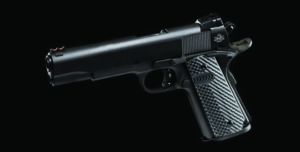
Both of us were asked to used FMJ roundnose bullets for the week — though my handloads for both are more accurate. Net for wife’s gun: No jams or failures to feed, 100%, and we fired 400 to 500 rounds for the week, some practice and sighting in, but mostly during combat drills. Even my Para had a couple of failures to feed, and, per some sage advice from the school, found out that 20-year-old-plus magazine springs do weaken. I replaced all of the springs later with Wolff springs and I may get 20 years out of those. Bottom line: The RIA 9mm on the 1911 platform is a bargain compared to most other 9mm semi-autos. —Bruce
Re “Single-Action Revolvers: Best Buy Is Uberti’s Cattleman 1873,” July 2018
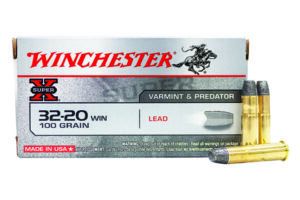 I read your article with great interest because I too have a Uberti Cattleman II revolver, but mine is in 32-20 Winchester. I have read and have been told that Winchester ammo in the silver box with a 100-grain lead round-nose bullet, Winchester X32201, running in the 1210 fps velocity range, should not be shot in reproduction revolvers because the pressure is too great. I was told I should stick to cowboy loads in the 750-850 fps range, such as cartridges from HSM or Black Hills. In a rifle, the faster ammo is okay, but not so in a revolver, even in a brand-new Uberti replica in 32-20. I have some Remington Express Rifle 32-20 ammo new production in the yellow-and-green box, also with stated velocity in the 1200-fps range and should not shoot that. What ammo is proper in my new revolver? Maybe the 1210-fps ratings come from rifles, and the pistols are running safely in the 750-850 fps range and all is well? I’ve contacted Uberti as well as Remington with this same ammo question but haven’t heard anything back yet. Hopefully, what I have is safe, and my new Uberti revolver has been made well enough to safely shoot the Winchester and Remington ammo I currently have. If I need to seek out just cowboy loads alone that’s what I’ll do, but I thought current advancements in metallurgy with my new revolver I wouldn’t have run into this problem. I appreciate your time and look forward to reading about your thoughts and comments on my ammo question. — Richard
I read your article with great interest because I too have a Uberti Cattleman II revolver, but mine is in 32-20 Winchester. I have read and have been told that Winchester ammo in the silver box with a 100-grain lead round-nose bullet, Winchester X32201, running in the 1210 fps velocity range, should not be shot in reproduction revolvers because the pressure is too great. I was told I should stick to cowboy loads in the 750-850 fps range, such as cartridges from HSM or Black Hills. In a rifle, the faster ammo is okay, but not so in a revolver, even in a brand-new Uberti replica in 32-20. I have some Remington Express Rifle 32-20 ammo new production in the yellow-and-green box, also with stated velocity in the 1200-fps range and should not shoot that. What ammo is proper in my new revolver? Maybe the 1210-fps ratings come from rifles, and the pistols are running safely in the 750-850 fps range and all is well? I’ve contacted Uberti as well as Remington with this same ammo question but haven’t heard anything back yet. Hopefully, what I have is safe, and my new Uberti revolver has been made well enough to safely shoot the Winchester and Remington ammo I currently have. If I need to seek out just cowboy loads alone that’s what I’ll do, but I thought current advancements in metallurgy with my new revolver I wouldn’t have run into this problem. I appreciate your time and look forward to reading about your thoughts and comments on my ammo question. — Richard
Hey Richard: The only sure way is to shoot ammo recommended by the manufacturer. Keep banging on Uberti until you get an answer. Preferably in writing. But the cowboy loads are certainly safe, so for the short term, why not trade your hotter loads in exchange for cowboy loads and go get busy with that Cattleman? — Todd Woodard
Re “9mm Wheelguns: Rock Island Armory, Smith & Wesson, Taurus,” March 2021
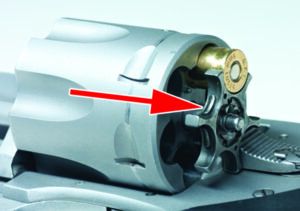
Todd, just finished reading the comment on 9mm wheel guns and the problem with moon clips. Several years ago, a friend of mine who had had a stroke asked me if there was a handgun that he could buy with light recoil and could be operated with one hand. At that time I was not aware of anything that would fit his needs. The 38 Specials had too much recoil, and moon clips were out of the question. Then I read an article on 9mms and found out about the Charter Arms 9mm Pit Bull, which doesn’t require moon clips. It has a small tab in the cylinder instead that fits under the rim of the 9mm case, though this can’t be this easy to do or the major gun manufacturers would have produced them long ago. But no, Charter Arms was the only one with the feature. Called to order one (the price was right), but the wait time was almost two years. They were having trouble with the cylinder manufacturing. The wait was worth it. The only trouble is, some times the empties get stuck and don’t fall free. My wife loves it; she is 80 years old, and her hand strength is not what it used to be, but she can thumb back the hammer and control the recoil with no trouble. With no slide to rack or thumb getting in the way with her cup-and-saucer hold, she feels very comfortable and confident with the handgun, so bad guy beware. It might be worth looking to see if they are still in production or come in another version. — R.F.
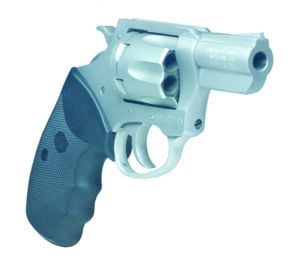 Hey R.F.: We tested the Charter Arms Pitbull 9mm No. 79920 9mm Luger in the March 2013 issue. It got an A- grade and is pictured left. We said, “The largest of the revolvers in the test, the Pitbull was by far the most accurate. With the size increase comes added weight and the bulk of the bigger grip. Concealing this revolver in an ankle holster would be very difficult, so as a true back up, it might be too big. As a primary carry gun we liked it, and because it operates without moon clips, this six-shooter competes favorably head to head with the five-shot S&W 638.” — tw
Hey R.F.: We tested the Charter Arms Pitbull 9mm No. 79920 9mm Luger in the March 2013 issue. It got an A- grade and is pictured left. We said, “The largest of the revolvers in the test, the Pitbull was by far the most accurate. With the size increase comes added weight and the bulk of the bigger grip. Concealing this revolver in an ankle holster would be very difficult, so as a true back up, it might be too big. As a primary carry gun we liked it, and because it operates without moon clips, this six-shooter competes favorably head to head with the five-shot S&W 638.” — tw
Re “Tips for the Older Shooter,” March 2020
As one of the old timers, I found that my 1911 is a bit much to shoot after several magazines. While I found that a S&W 638 and the 110-grain Hornady loads are easier to shoot, the Airweight 638 is too light to shoot a lot, even with the 110-grain loads. The S&W 3-inch Model 60 in stainless steel has enough extra weight to dampen recoil. I also swapped out factory grips for the Crimson Trace 305 grips because the larger laser grip adds ease of pointing at your target. A 3-inch stainless-steel revolver with properly sized grips is my choice for us oldtimers. Also, I have found the Charter Arms Bulldog-size frames are nice in either 357 Magnum or 44 Special. I also have an Action-Jack cocking aid for my 9mm pistol because racking a slide is an issue with old hands. Having no slide to rack is another plus for a revolver. — Grumpy 49
For those who haven’t seen the Action-Jack tool, it’s available at actionjackusa.com. Be sure to click on the YouTube link to see how it works. This isn’t necessarily an endorsement or review. — tw
As a 73 year old, I carry my S&W M60 3-inch full underlug in 38 Special. At 23 ounces, it absorbs the recoil of +P ammo very well, and with lead wadcutter target loads, it is very accurate and is my trail gun. — Gee Bee
Not to sound partial towards S&W, but the S&W EZ 380 and 9mm were especially designed for seniors for easy operation. It was disappointing that neither of these two firearms were mentioned. — Dietrich
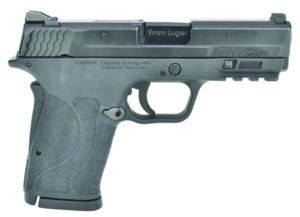 We tested a Smith & Wesson M&P9 Shield EZ NTS 12437 9mm Luger (pictured right) in the February 2021 issue, “Value 9mm Semi-Automatics: Ruger, Taurus, KelTec, and S&W.” Our comments about that gun included, “Function was flawless through a number of different types of ammunition, including handloads. Felt recoil is, obviously, subjective, but it was less than we expected. The EZ9 produced the second-best groups of the four handguns tested and also came in second in the speed drills. Its favorite ammo was the SIG 115-grain V-Crown.
We tested a Smith & Wesson M&P9 Shield EZ NTS 12437 9mm Luger (pictured right) in the February 2021 issue, “Value 9mm Semi-Automatics: Ruger, Taurus, KelTec, and S&W.” Our comments about that gun included, “Function was flawless through a number of different types of ammunition, including handloads. Felt recoil is, obviously, subjective, but it was less than we expected. The EZ9 produced the second-best groups of the four handguns tested and also came in second in the speed drills. Its favorite ammo was the SIG 115-grain V-Crown.
Our Team Said: True to its goal, the S&W Shield EZ9 was easy to manipulate and soft to shoot, but the sights needed to be calibrated a bit better. Once sighted in, the rear sight might need a dab of temporary thread locker to ensure the sight doesn’t move in its dovetail.”
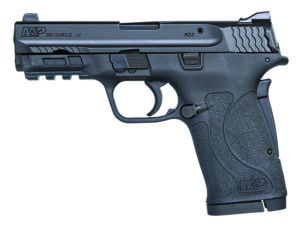 We tested a Smith & Wesson M&P 380 Shield EZ 180023 380 ACP (pictured left) in the August 2018 issue, “380 ACP Shootout: New Models Versus a Time-Tested Veteran.” In that story, we graded the 380 Shield EZ as an A gun, saying, “The Shield is EZ-ily among the most useful and attractive 380 ACP pistols we have tested. The Shield is a good choice for home defense for those who cannot handle a caliber larger than the 380 ACP. As a carry gun, it isn’t smaller than some 9mm Luger handguns, but it is much easier to fire well. The barrel length at 3.65 inches is the longest of the pistols tested and afforded the highest velocity and energy.
We tested a Smith & Wesson M&P 380 Shield EZ 180023 380 ACP (pictured left) in the August 2018 issue, “380 ACP Shootout: New Models Versus a Time-Tested Veteran.” In that story, we graded the 380 Shield EZ as an A gun, saying, “The Shield is EZ-ily among the most useful and attractive 380 ACP pistols we have tested. The Shield is a good choice for home defense for those who cannot handle a caliber larger than the 380 ACP. As a carry gun, it isn’t smaller than some 9mm Luger handguns, but it is much easier to fire well. The barrel length at 3.65 inches is the longest of the pistols tested and afforded the highest velocity and energy.
Also, “Our Team Said: We like the Smith & Wesson Shield. We are generally not comfortable with the power level and wound ballistics of the 380 ACP; however, loads like the Black Hills Ammunition Honey Badger and the Federal HST make the cartridge much more attractive than the previous choice of ball ammunition or a JHP that underpenetrates. The pistol is a joy to fire and use. It is more than accurate enough for personal defense. In fact, while we are not concerned with field and trail use, one of the raters noted it is accurate enough for small game as well, and the centerfire cartridge is far more reliable than rimfire ammunition, making the Shield a better choice for personal defense than any 22 LR rimfire pistol. We like the concept of the Shield and the pistol itself and give it a solid A rating.” — tw
I’m a bit disappointed because the article doesn’t address eyesight issues us older folks have. I can’t really make out my sights clearly anymore. Hoped this article would speak to options. — Steve
Hey Steve: There was a lot to cover in that article, and it really could be a book. But the trend toward red dots on defensive pistols is a pretty good solution. I personally prefer lasers. But I agree we should look at that topic in more detail. — tw
Re “Kydex and Leather Holsters,” May 2020
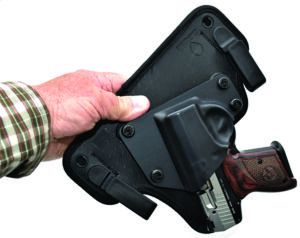 Well-written article with the test criteria well thought out. Clear explanation of all important features for a good carry holster. I look forward to reading your newsletter every month. — Joseph
Well-written article with the test criteria well thought out. Clear explanation of all important features for a good carry holster. I look forward to reading your newsletter every month. — Joseph
Hey Joseph: Thanks for the kind words. I’ll pass them along to the author of the piece. — tw
GUN TESTS REPORT CARD GRADING
Gun Tests Grade: A
A gun with this rating functions perfectly, shoots accurately, and exhibits comfortable, easy use for its owner. We may prefer one gun over others based on its unusual accuracy, superior performance, unusual features, or nice cosmetics. We recognize such a gun for these traits without regard to its cost.
Gun Tests Grade: B
We give this ranking to a gun that functions appropriately for its category, but which might not do as well in major areas as an A-ranked gun.
Gun Tests Grade: C
We may have reservations about some aspect of a gun’s performance or pricing. We express those reservations so the reader can balance our concerns with his or her needs.
Gun Tests Grade: D
Some aspect of a gun’s performance — in particular, safety, function, or accuracy — doesn’t meet our standards and isn’t easily resolved.
Gun Tests Grade: F
Some aspect of a gun’s performance is dangerous, inappropriate for the category, or is likely to fail.
We welcome mail from our readers. To send us comments or questions about previous articles in the magazine, email us at: GunTestsEditor@icloud.com. If you’ll include the month and year of the article you’re writing about, it’s a big help.
Also, please include your name, address, and phone number. We won’t publish your personal information other than your first name, but we may need to contact you about material in your letter. We really appreciate the quality and depth of thought our readers generate.



























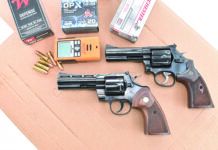

I would like to buy back issues of GUN TEST for the year 2021, Jan thru July and Nov, help would be greatly appreciated. Thank you Robert P kurz Sr